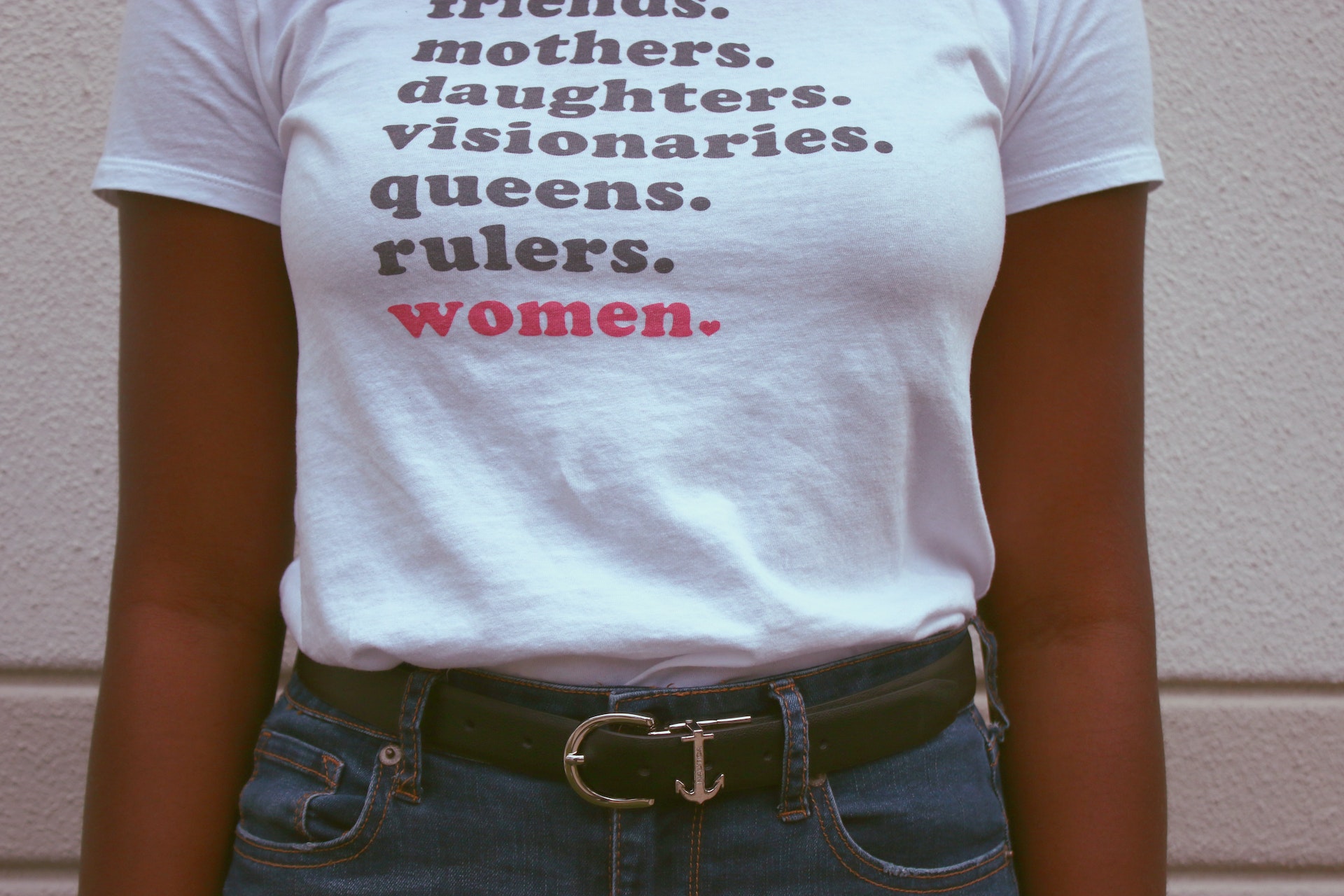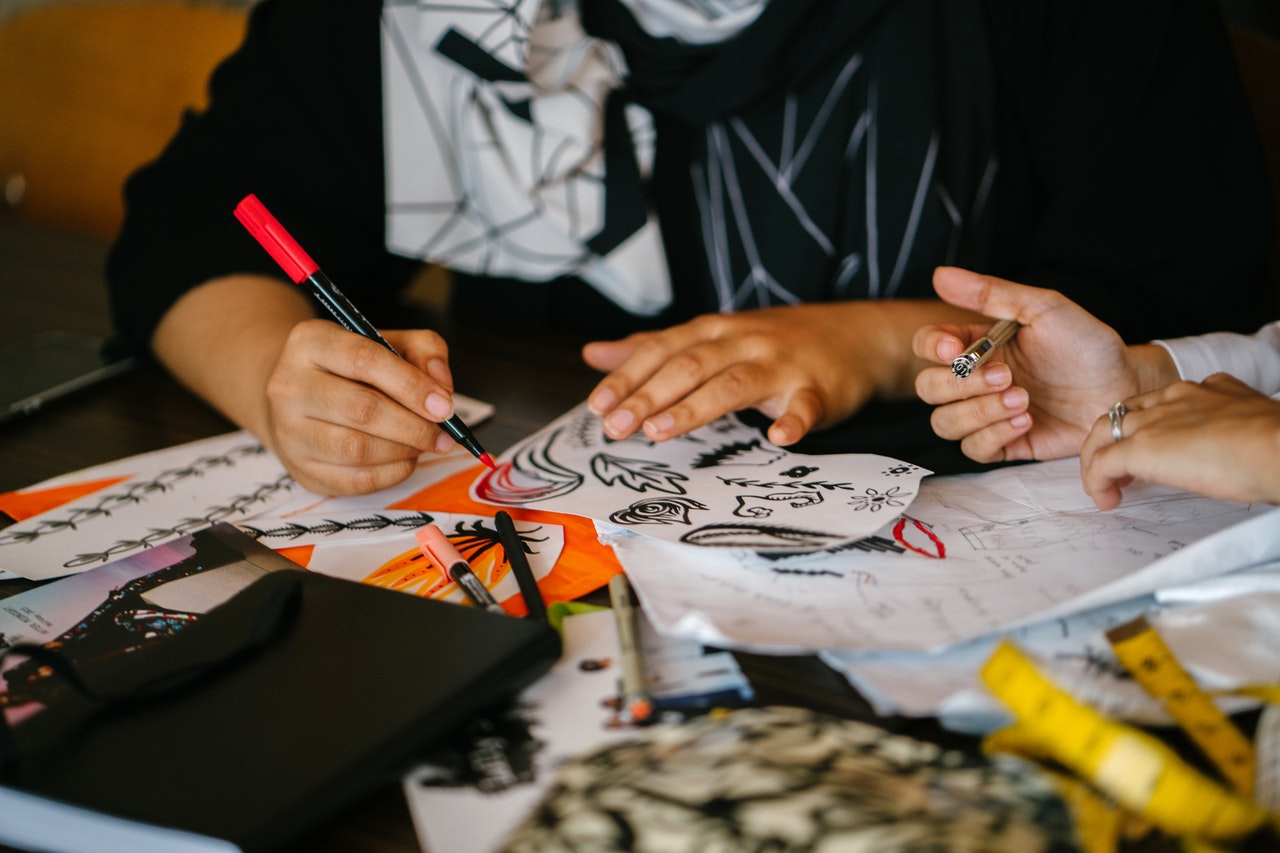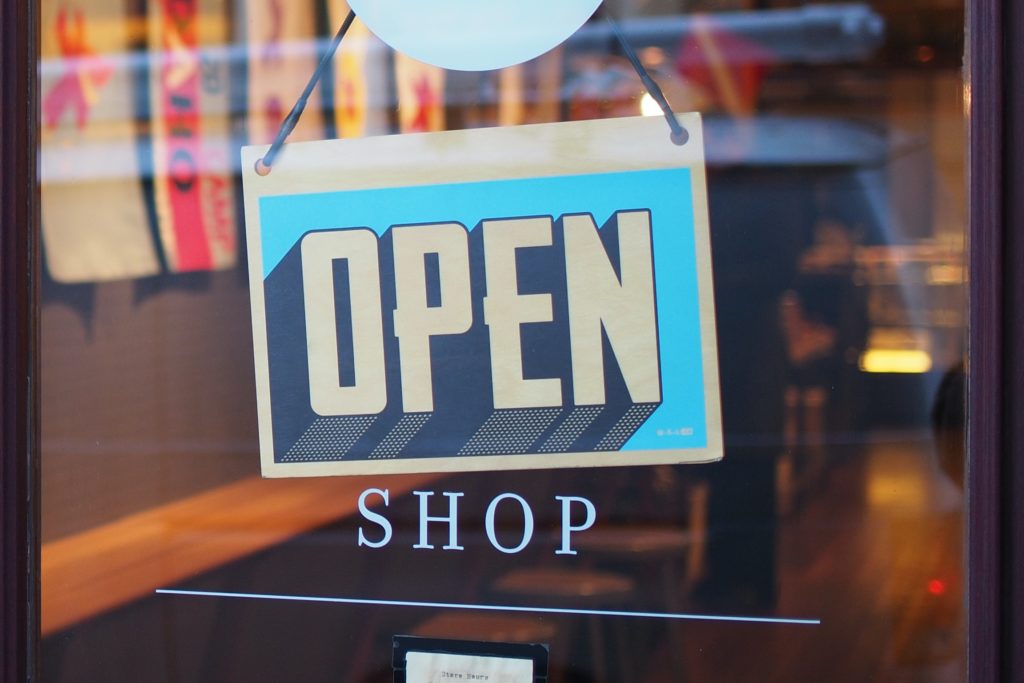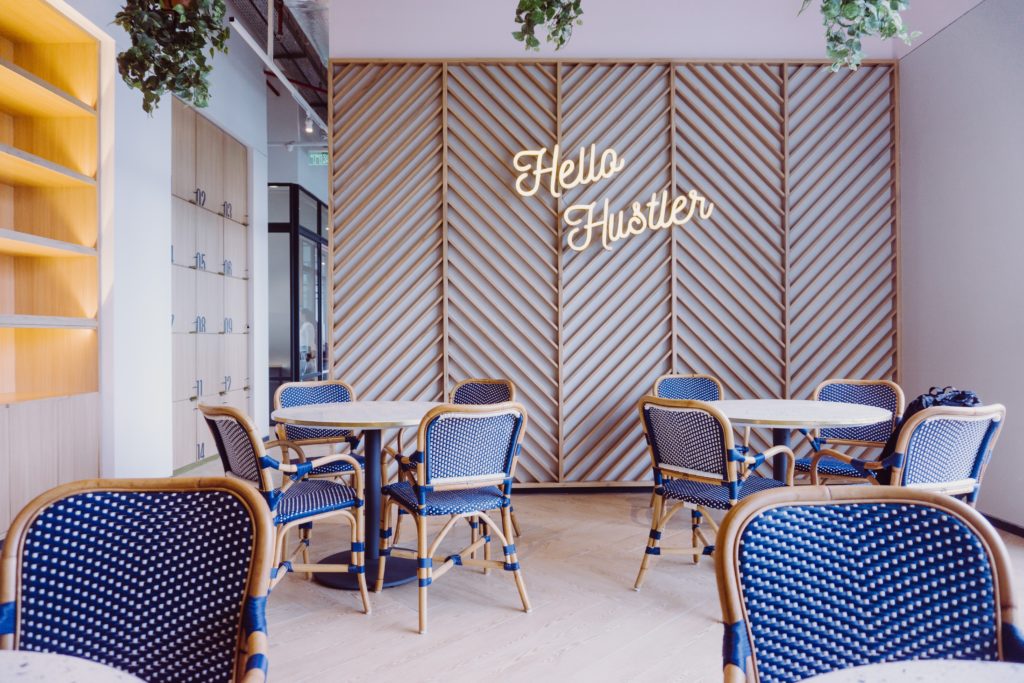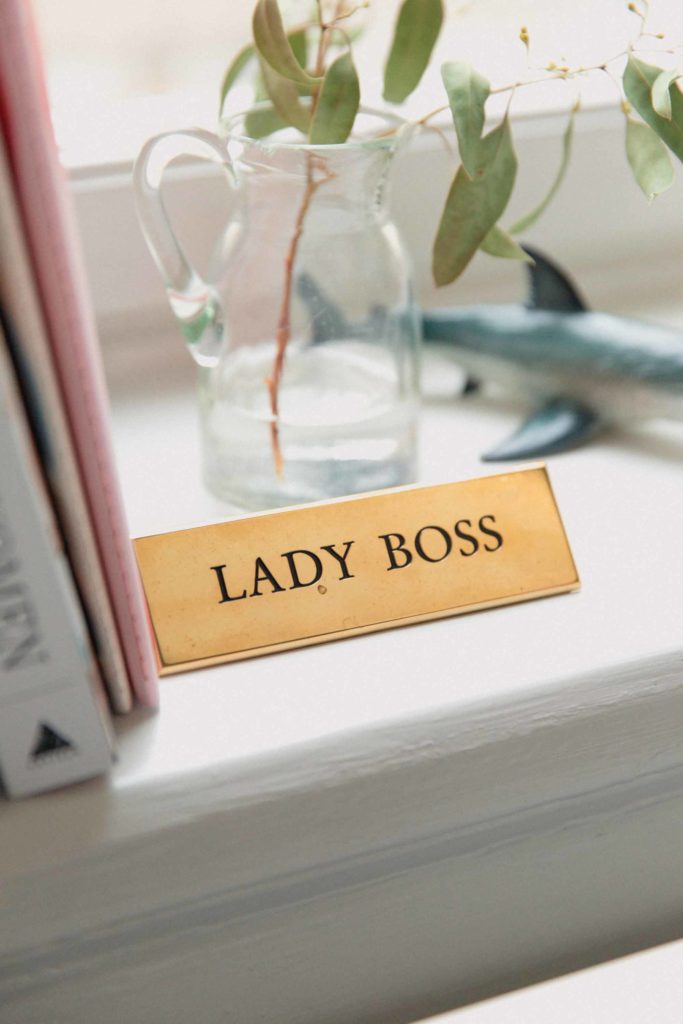Besides your business’s website, branding and logo design are the most important aspects of your women-owned business! Your logo design and branding are what customers see first. The aesthetic should speak for itself and provide customers, clients, and patients with your business’s culture and offerings. If you’re getting ready to design your own logo, rebrand, name your business, or hire a branding agency like Charm School, keep the following tips in mind during this creative process. They’ll help you land on a logo you love and stay in the minds of customers.
1. Keep Your Logo Design Simple!
Remember that your logo exists to express your brand’s personality and hint at what you do. When your logo flashes across a screen, people should “get it” instantly. Simple designs trump fancy ones by being memorable and easy to place and resize on any medium. Here are more tips on logo design.
2. Visually Represent Your Business, Demographic, and Mission
Your logo must speak to your brand identity. You don’t want customers to feel cat-fished when they see a modern and edgy logo, but get a buttoned up company. Or likewise, a stodgy logo people overlook because your business’s voice and tone have some sass. Also, try to avoid trends. What’s “in” now could be completely dated in five years. Your logo should be a little black dress. Something classic, sleek, and fresh for years to come. You’ll save time and money on your logo by designing for longevity.
3. Scope out Your Competitors’ Logos and Branding
Before you begin designing, take a look at what your competitors do. You never want to appropriate someone else’s logo by copying. You can also learn how to stand out from the competition visually, while keeping with customer expectations. For instance, solar power companies typically incorporate earthy or “green” color palettes. That’s because customers respond well to these colors when choosing a provider for environmentally-friendly energy. You should design your logo to stand out, but also stay within the bounds of industry-led conventions.
4. Decide on Illustrative v.s. Typographic
Does your brand plan on using its name as the logo? Or, will you use a symbol or abbreviation to illustrate your company name? Much of this will depend on the length of your business name, your industry, and your overall marketing strategy.
If your company is brand new and needs to raise brand awareness, it’s wise to include your full name in your logo. Starbucks, for instance, previously chose to have its name incorporated into the company logo. However, once the iconic coffee chain became known for its mermaid symbol, it no longer needed typography in the logo. Our point? It’s always better to be specific and recognizable than to be vague for the sake of a cool-looking design. A neat logo icon does you no good if it doesn’t instantly make customers remember your business name and what you offer.
5. Make a Mood Board
If you can’t quite articulate what you want in a logo, start with a mood board. Compile brand elements you like from other websites and designers. Doing so helps narrow down the vibe and creative direction your logo design and branding should take. Pinterest boards can be a great tool for his type of initial research! We always include mood boards in our brand style guide to help visually explain the vision of our clients’ businesses.
6. Choose Colors and Fonts Strategically
Customers make up their mind about brands in seconds. In fact, consumers base about 62‐90 percent of their judgments on your brand colors alone!
To help your brand succeed, you need to be strategic with your palette and typography. A designer can help you choose the right colors to stand out and project the perfect mood to your audience.
The typography you use also influences customers’ attitudes toward your brand. For instance, lawyers probably wouldn’t want to use a flamboyant typeface, because their clientele wants professional, mature, and knowledgeable counsel. Most iconic brands use only one or two fonts, so keep it simple and don’t sacrifice readability for flashy appeal.
7. Great Logos Stand in Black and White
Will your logo possess the same impact in black and white as it does in full color? Keep in mind that you may need to make your logo monochromatic to help it stand out for web design and print applications. When you overlay your logo over photos, other graphics, and marketing materials, it needs to be legible and attractive!
8. Think Long-Term
Logos cost anywhere from several hundred to thousands of dollars. Invest wisely by choosing a design that will evolve with your brand, stay relevant, and stand the test of time. Most brands at least consider refreshing logos and branding every five to ten years. While it depends on your budget, goals, and audience demographics, choosing a logo that has longevity means you can avoid frequent and unnecessary rebranding.
9. Keep and Open Mind
You may have a rigid idea fo what your brand means and how you want it to be represented, but creative brainstorms should include a variety of concepts. That’s how you whittle down your preferences to find the perfect logo. Choose a logo designer who offers at least three logo concepts to begin with.
Of course, if you want more iterations and have the branding budget, you can ask for more. However, too many options can cause a problem by overwhelming you and causing disagreements among stakeholders.
At Charm School, we always begin every branding project with an in-depth discussion and discovery call. During this meeting, we learn everything about your business and what you hope to achieve with your logo and style guide. Our logo concepts encompass your goals and help you whittle down your choices and design the perfect logo. See what our clients have to say.
10. Save Logo Files For Print and Web!
We’ve had clients take logos saved for the web to a printer for a large format billboard. Suffice to say, it didn’t turn out crisp and clear. Always make sure you save high resolution files of your logos for web and print! Resize to exact specs to avoid pixelation.
Of course, any reputable graphic designer, branding agency, or logo designer will do this by default (like Charm School!). But if you’re taking the DIY approach, don’t forget or you’ll end up having to pay to remake your logo in a professional format.
11. If it Ain’t Broke…
Do you really need to redesign your logo? Are you relaunching your brand on a whim? Unless you’re starting a business from scratch, you have dated branding, or you changed target markets, analyze why you want to rebrand your logo before you start the process. We’ve all heard about catastrophic attempts to rebrand that ended in public ridicule and lots of wasted marketing dollars. Don’t let it happen to your company!
12. You Get the Logo You Pay For
How much does branding cost? While there’s a logo for every budget, your branding is not a place you want to cheap out. To determine how much you should spend on your logo, ask yourself how important your branding is to your marketing. If you are a small family business with local clients, you may not feel the need to pay big bucks for a logo. However, if your business sells online or plans on scaling, it’s always easier to pay upfront for great branding than to rebrand after your business has become profitable and gained loyal customers. They’ll likely forever associate a sub-par logo with your business, and you might struggle to regain that recognition when you rebrand to appeal to a wider market.
13. Only Loop In Key Decision Makers on Logo Design
When it’s time to select a logo, narrow down your decision-makers to the most important people in your business. It’s okay to do a poll with employees, but the ultimate choice should be up to you. Too many cooks in the kitchen often make for chaos and indecision.
14. Get Unbiased Opinions
Once you’ve narrowed down your logo selection, consider creating a focus group to give you feedback on your new branding. We’ve seen people put their designs on LinkedIn and Instagram and solicit great feedback from their network. This feedback should tell you if customers “get” your branding and which design concepts they’re drawn to most.
We hope these tips for logo design and branding pumped you up for this crucial phase in your business development! Whether you decide to hire a freelance designer or agency or whip up your own logo on Canva, it’s important to understand basic brand and logo strategy to land on a logo that you’re psyched about. If reading this article has made you sure you don’t want to tackle this important process alone, Charm School is always here to discuss your options!

